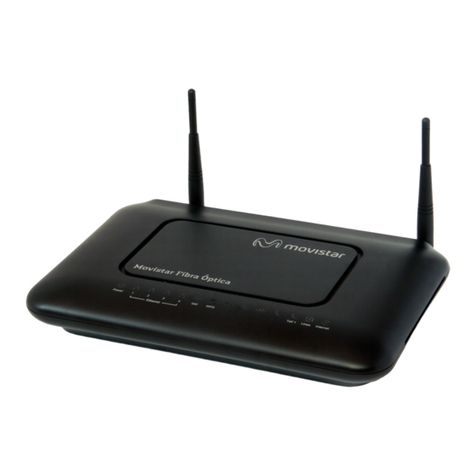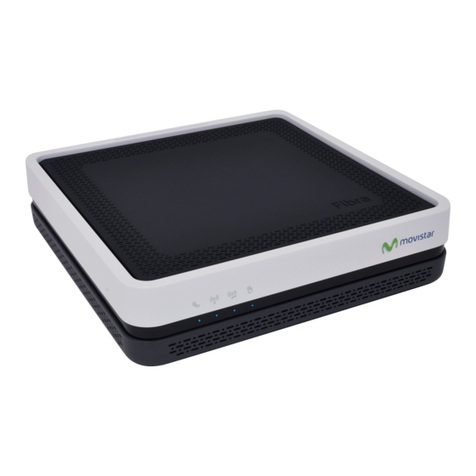
Chapter 1 Introduction 8
The following table explains the connectors and buttons on the rear panel:
Table 1 The Rear Panel
CONECTOR DESCRIPTION
RESET Use this button to restore the default settings of the Router. Press this button for 5
seconds to restore default values. Press 1 second or longer to restart it.
Note: If you reset the Router, you will lose all configurations that you had previously
and the password will be reset to the defaults.
WPS/WLAN Use this button to enable or disable the WiFi and WPS features on the Router.
The WiFi feature is enabled by default. Press this button for 1 second to turn it off.
To enable the WPS feature, press the button for 5 seconds The WPS LED on the front
panel will flash yellow while the Router sets up a WPS connection with the wireless
device.
Note: To activate WPS, you must enable WPS in the Router and in another wireless
device within two minutes of each other.
ON/OFF Use this button to turn the Router on or off.
POWER Connect the provided power adapter to the 12V-1A power connector. Attach the
power adapter to a proper power source.
VOIP Use a telephone cable to connect the Router to a VoIP phone for VoIP service.
LAN4-1 Use an Ethernet cable to connect a computer to one of these ports for initial
configuration and/or Internet access.
DSL Use an RJ-11 telephone wire to connect this port to a telephone jack for VDSL WAN
access.





























